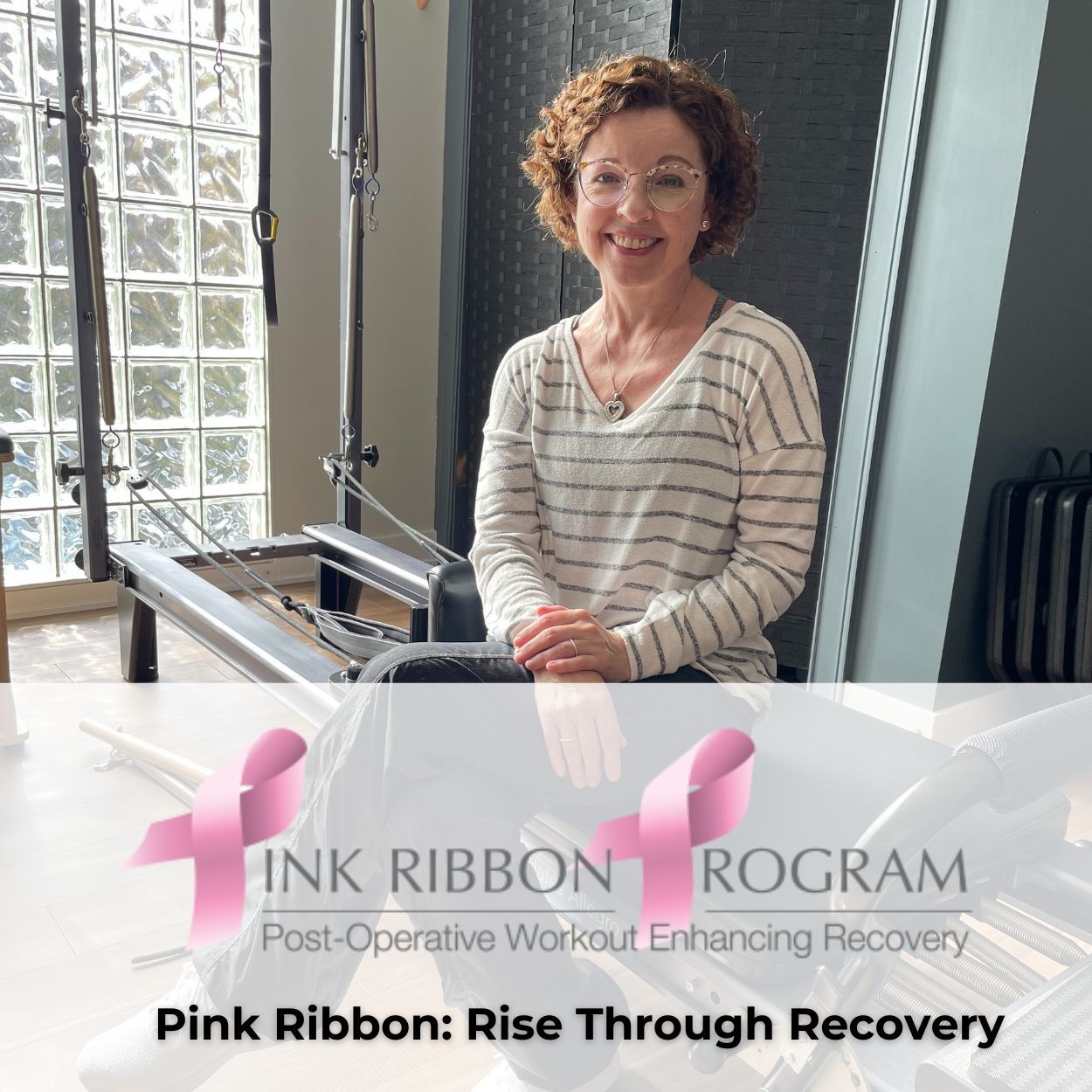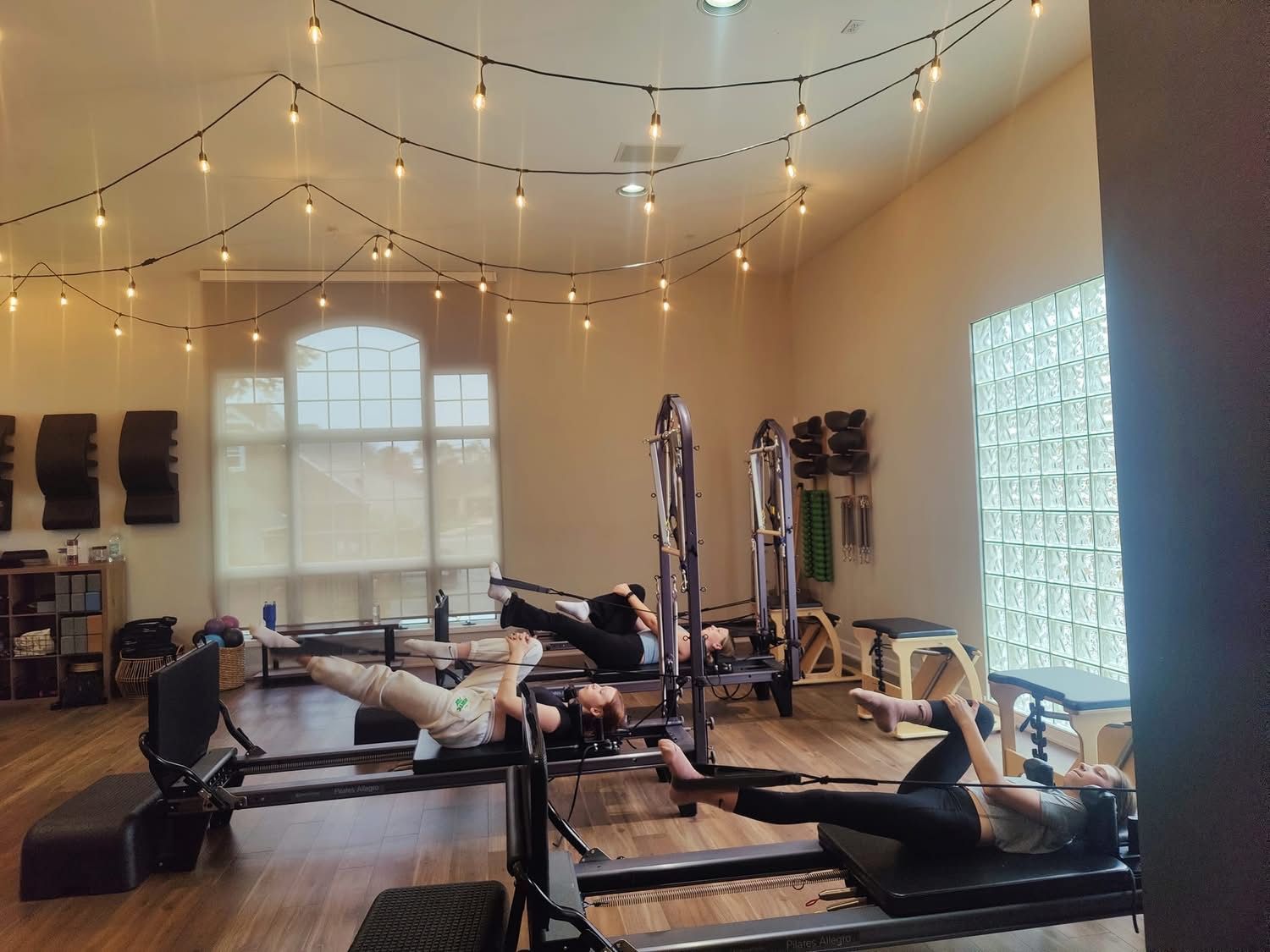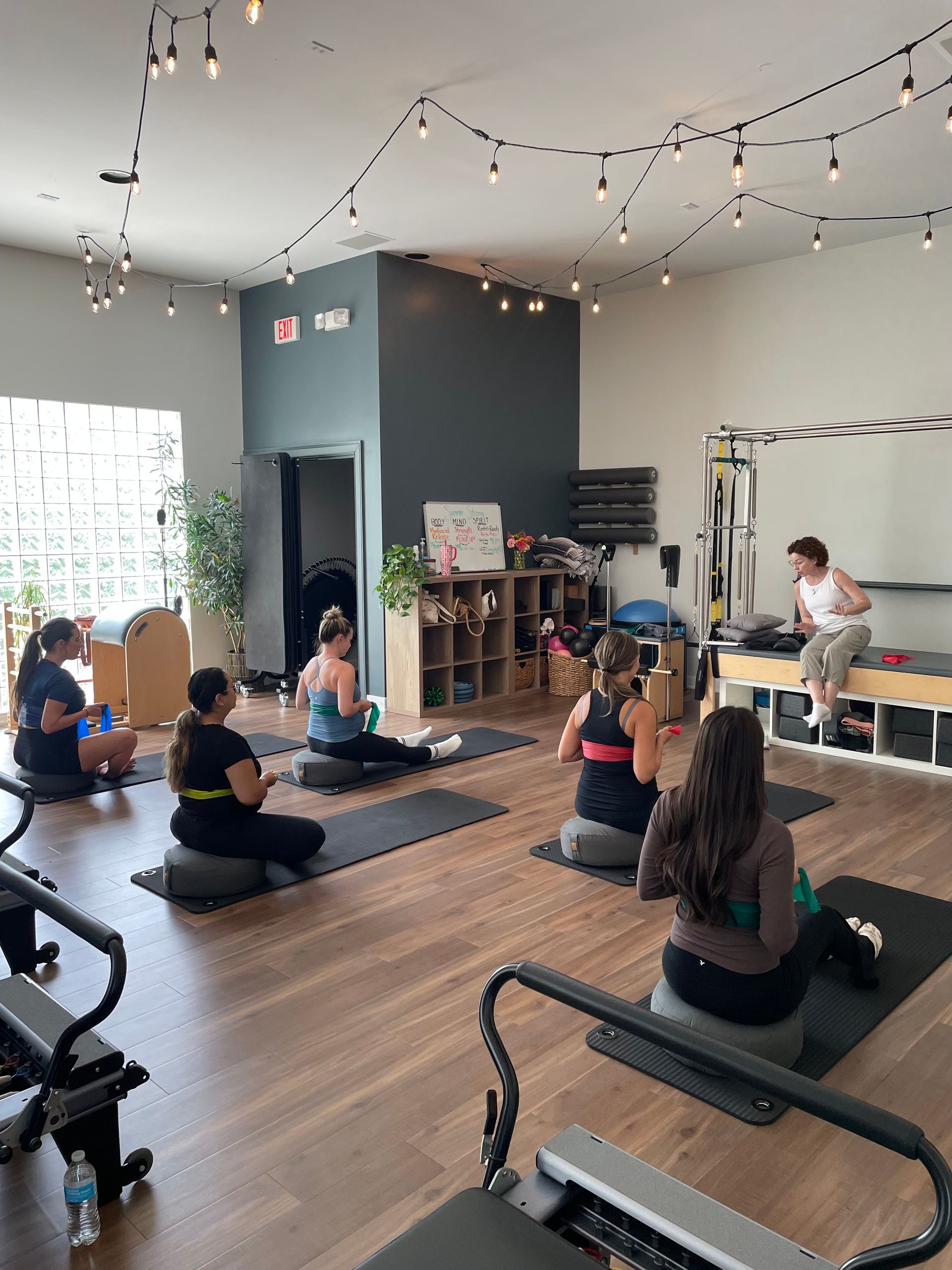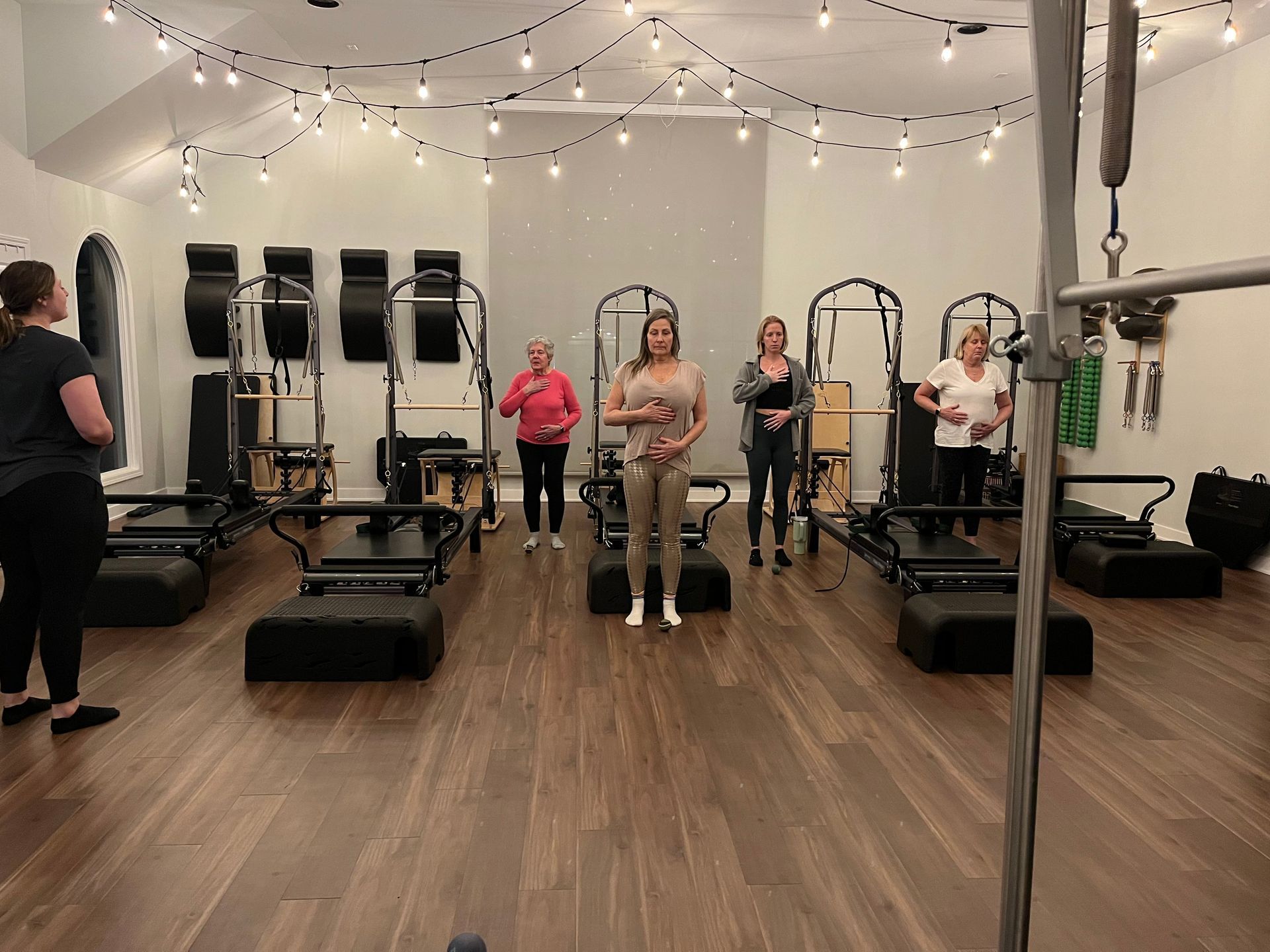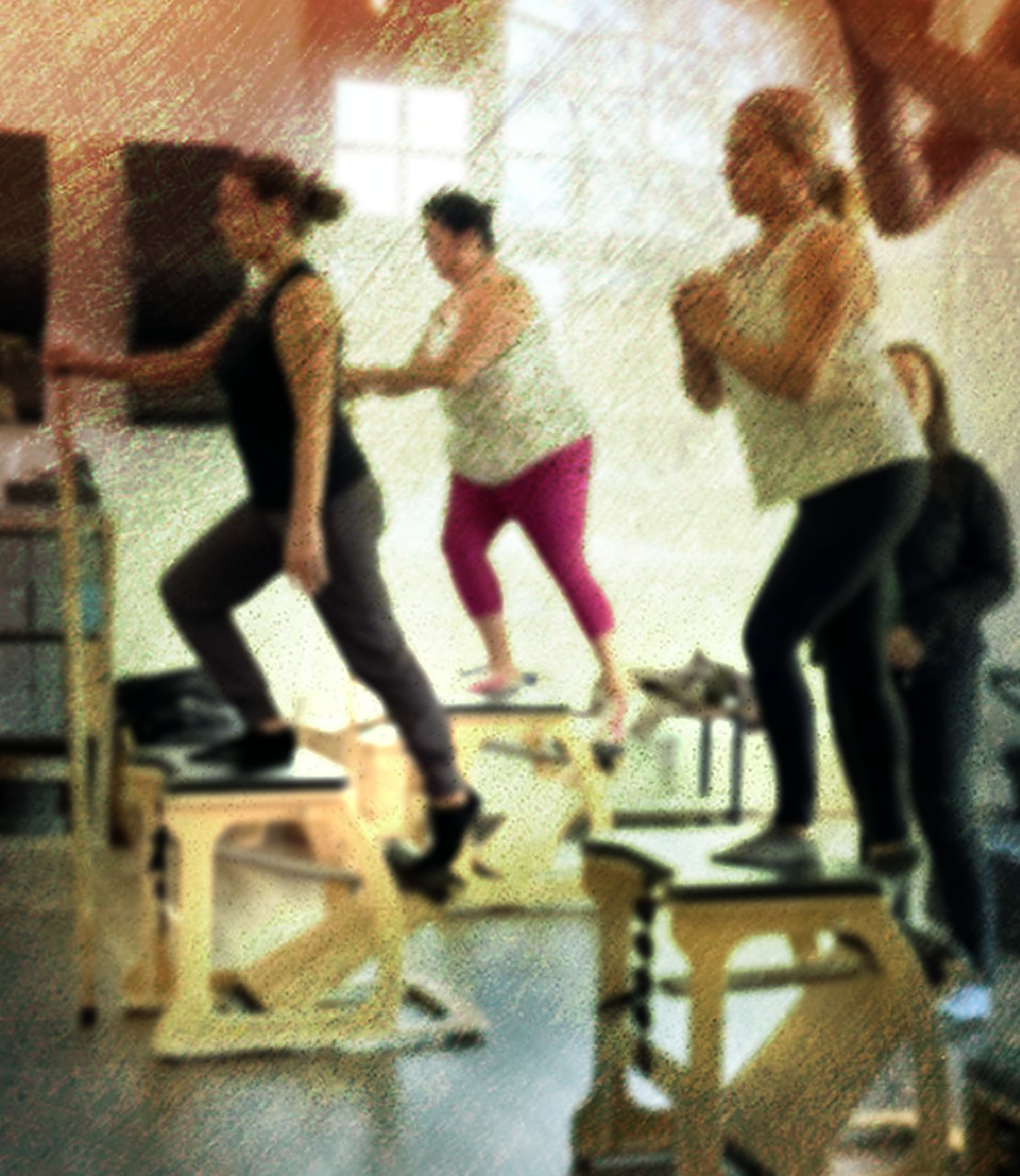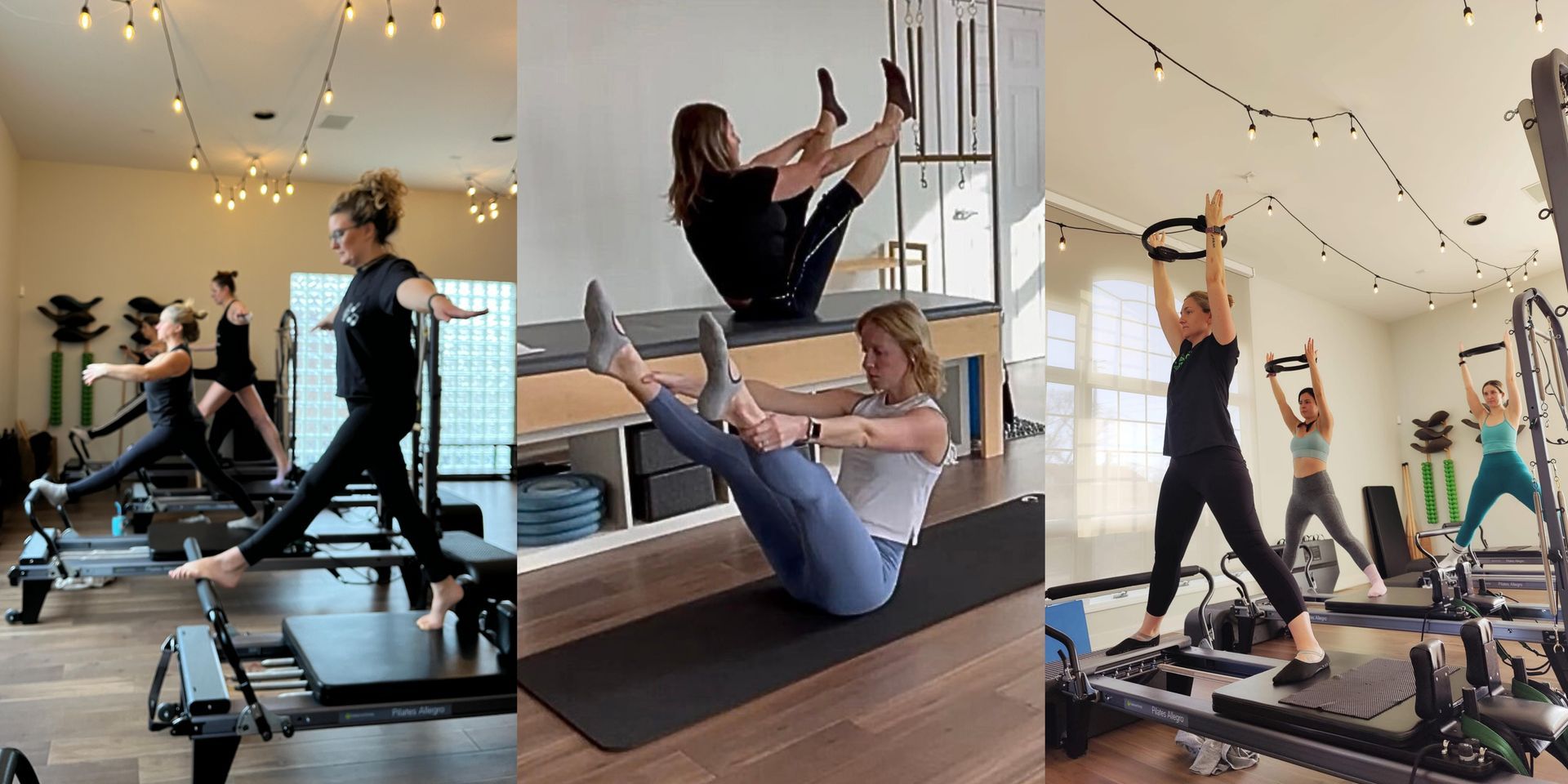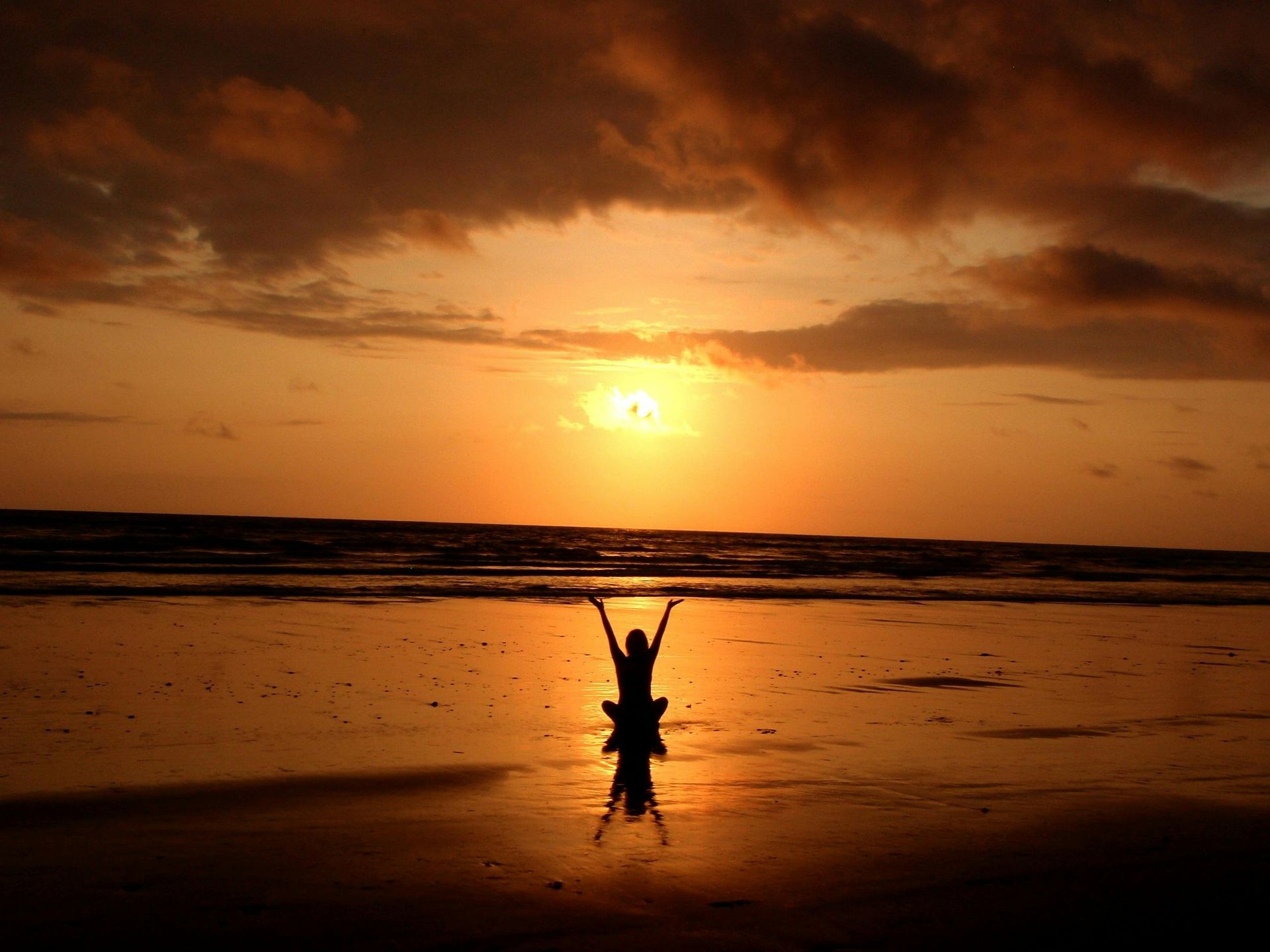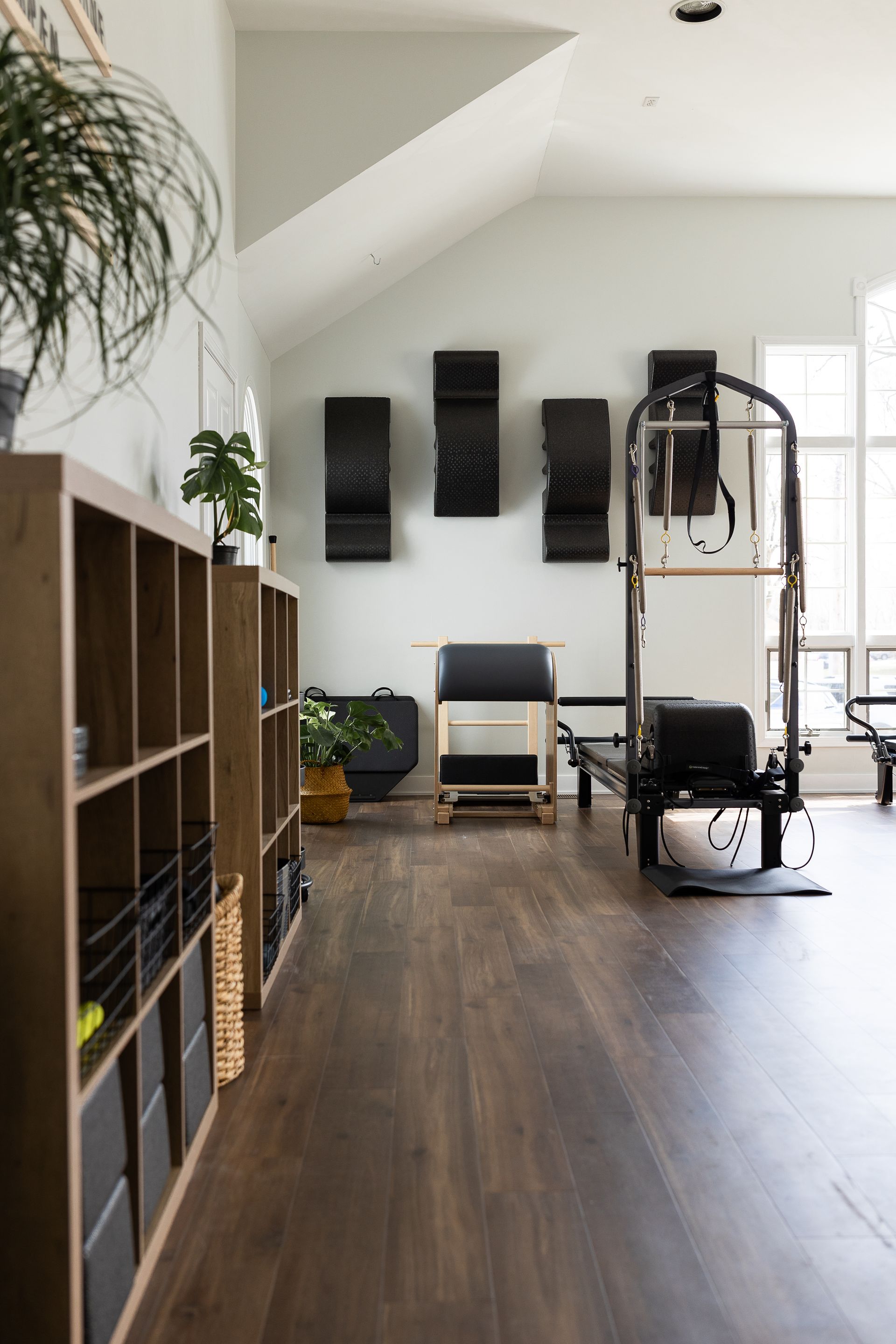How Pilates Techniques and Movement Enhance Daily Life
Movement is more than just exercise; it’s essential to how we live, feel, and connect with ourselves. Mindful, intentional movement has the power to transform everyday life, even though it may not always be prioritized as the top activity of the day. Through the lens of Pilates, functional training, and body awareness, a Pilates practice, specifically one rooted in mindful movement can cultivate strength, resilience, and freedom. In this blog, we'll explore how dynamic stretching, flexibility exercises, and movement (both on and off the Pilates reformer) help to unlock potential far beyond the studio.
The Importance of Movement
As we know all too well, modern routines often keep us sedentary, leading to tight muscles, limited mobility, and postural strain. However, when we prioritize movement that feels nourishing and aligned, we can begin to shift these patterns, making them become more regular and part of regular, mindful movement. When moving with intention, whether it is a Pilates class at a studio, or even a stretching program at home, thinking about how sustainable movement that fits into your life—and what that goal actually looks/feels like—builds strength, balance, and mobility that carries over into how you sit, stand, bend, and breathe.
Overview of Pilates
As we've previously talked about, Pilates is a movement method designed to build core stability, improve alignment, and increase body awareness. Pilates doesn’t just help you move better—it helps you feel better. Whether you're walking the dog, gardening, or getting up and down off the floor, this practice equips you with the tools to move with more ease and intention. And though many wonder which they should begin with or focus on first, whether it is mat or equipment-based Pilates, meeting clients where they are and tailoring the work towards their goals is what is important.
Pilates Principles
The foundation of Pilates lies in key principles: concentration, control, centering, flow, precision, and breath control. These aren’t just ideas we talk about; they’re woven into the movements within Pilates sessions. These movements teach us how to slow down, move with purpose, and build deep strength from within. As these principles take root, those who practice Pilates often report feeling more capable, present, and attuned to their bodies throughout the day. Many wonder why the importance of breath control, body alignment, and moving with mindfulness is stressed during classes, but even more importantly, they often wonder how it correlates to daily life.
Mindful Movement
As a comprehensive approach that integrates various emotional, bodily, and cognitive aspects into physical activity, promoting overall well-being,1 mindful movement ultimately means paying attention to how your body feels and how your breath flows, rather than pushing or forcing. This somatic approach reduces the risk of injury, supports the nervous system, and creates space for healing and growth. It's also the foundation of how we teach all our classes (from group equipment to specialty series like Strength From The Ground Up).
Body Alignment
How we carry ourselves impacts everything from energy levels to joint health. Focusing on body alignment to support safe and effective movement is critical within a Pilates class.. Proper alignment creates a stable foundation, reduces compensation patterns, and invites more ease into everyday tasks like standing, walking, or reaching. Over time, this translates to greater physical confidence and comfort in your own body.
Breath Control
In Pilates, the breath isn't just a tool for oxygen—it's an anchor. Breath control supports core engagement, enhances focus, and calms the nervous system. Integrating breathwork into all Pilates sessions helps you connect more deeply with your body and move more efficiently. This connection to breath is especially beneficial during times of stress or fatigue and is foundational to a whole-body approach.
Pilates Reformer Techniques
The Pilates reformer (and other Pilates equipment) offers a unique, resistance-based way to move that challenges coordination, control, and stability. Using cables attached to a padded frame, the Pilates reformer was designed to allow for a smoother execution, or smoother form, for the exercises while using the reformer. Think of the Pilates principles we mentioned before-the "flow principle" should come to mind. Smaller group equipment classes often offer personalized guidance so you can explore this powerful piece of equipment safely. All of the Pilates equipment allows for smooth, supported movement patterns that build strength without strain. Though there are many types of movements that can be done on the Pilates reformer, each movement can be adapted for your personal strength, flexibility, and movement goals.
Key Reformer Movements for Flexibility
Many of our clients come to Rise looking for more ease in their bodies. Reformer exercises like leg circles, long spine stretch, and feet-in-straps sequences are ideal for increasing joint mobility and releasing chronic tension. These movements not only support flexibility exercises and dynamic stretching, but also encourage alignment and core strength at the same time.
Dynamic stretching keeps the body moving while activating the muscles, preparing them for a fuller range of motion. It's a key element in many mat and equipment classes. Dynamic stretches increase circulation, reduce stiffness, and create space in the joints—making them ideal before a workout or first thing in the morning. Many may think of stretching as something you reach for and hold for a specific set time(30 seconds, 45 seconds, etc.). This is what is called static stretching.
Dynamic stretching in Pilates(both mat and Reformer Pilates) can include:
- Arm Circles
- Leg Circles/Leg Swings
- Bridge Pose
Integrating flexibility exercises like spinal rotations, hamstring slides, and shoulder openers into every class should be the norm for Pilates. These movements don’t just feel good—they improve how you move throughout your day. Remember, when it comes to flexibility, the results of feeling better and movement better truly outweigh "seeing results". Our clients often report fewer aches, better posture, and a greater sense of freedom in motion.
Many of those flexibility exercises & movements can include:
- Cat/Cow
- Knee to Chest
- Spine Twist
- Neck Stretch
This list of dynamic stretching and flexibility exercises is just a sampling of what is taught in Rise Integrative's Mat & Reformer Pilates classes. To learn more in a Foundations or Mat Class, access the class schedule.
Functional Training through Pilates
What sets Pilates apart from other means of movement is its focus on functional training—improving movement patterns you actually use in real life. At Rise, we don’t just train muscles—we train whole-body coordination, posture, and control. Whether you're lifting groceries, climbing stairs, or sitting on the floor with your kids, Pilates helps those moments feel easier, more stable, and less effortful.
The goal with functional training is to focus on techniques that can help prevent injury and provide significant balance training.
Injury Prevention Techniques
Though we don't want to think of injuries occurring, accidents do happen, and Pilates movements and techniques really can be thought of as injury prevention techniques.
- Proper Form: As with any movement or exercise, learning the proper form and engaging the correct muscles is critical to prevent injury. And this is applicable not just to Pilates, but to everyday living. Just as there is a correct way to bend and lift a box, there is a correct way to bend and lift just your body. Pilates provides proper form and movement for your body.
- Modifications: Many times, we look at a new(or even a current) movement routine and think, "I don't think I can do this because of a previous injury", or "I just don't have the strength to lift from my core, so I'll push with my arms." Modifications in Pilates movement is essential for learning and progressing to new movements and practices.
- Progressions: Pilates progressions build upon many of the founding principles of Pilates. Though the traditional beginner, intermediate, and advanced are often thought of as breaking points for the levels in which to progress, instructors who are certified and knowledgeable can move those who practice Pilates safely as you progress.
- Knowledgeable Instruction: Your instructor should be able to observe and see not just how you move, but also where you move. Ultimately, your instructor can take into account your form, provide modifications, and get you to progress to where you want to be with your movement and Pilates practice.
Many of our clients at Rise come to Pilates after an injury-or to prevent one. Our instructors use thoughtful sequencing to build strength where it is needed and mobility where it is lacking, We prioritize injury prevention through precise, aligned movement and progressive programming, by learning how you move well, you build resilience that supports you long-term.
Balance Training and Its Significance
Balance is key to independence, especially as we age. Within movement and Pilates, balance is woven into many of the exercises done with classes, and then able to be replicated in your daily activities.
Footwork: Though most think of footwork on the Pilates reformer as a "squat on your back", it is so much more. From increasing your flexibility and strength in your feet and limbs, it can also truly help with the biomechanics of walking, stepping, running, and jumping.
Postural Alignment: Many think of posture beginning with your shoulders, but focusing on the entire body, from your spine, hips, knees, and feet, Pilates movement and correct Pilates movement helps with posture and alignment that is easy to duplicate throughout daily activities.
Coordination: Coordinating muscle groups and more than one body part may seem like a challenge, but it doesn't have to be. The benefits of coordinating muscle groups within a Pilates practice are more than physical, as muscle memory (the learned process that becomes more automatic) begins to take over with each class/movement you do.
In every Rise class, we include balance training that strengthens the core and stabilizers around the ankles, hips, and spine. These exercises improve not just physical steadiness, but also coordination, confidence, and focus. Balance is something you can train—and our classes help you do just that.
Integrating Pilates into Daily Routine
Movement is about more than just fitness; it’s about feeling grounded, capable, and whole. Through practices like Pilates equipment, dynamic stretching, and mindful movement, we support you in creating lasting changes that ripple into every aspect of life. We’d love to welcome you into our community and help you move through the world with strength, grace, and ease.
You don’t need hours each day to feel the benefits of Pilates. Even a few minutes of mat exercises can make a big difference in how you move and feel. Rise Integrative Pilates & Physical Therapy offers classes and private sessions to fit your lifestyle and meet you where you are. Whether you're just beginning or returning to movement, our approach is rooted in support and sustainability. This August, we’re especially excited to offer Strength From The Ground Up, a mat-based class series on Wednesday evenings with Karyn that focuses on helping you build the mobility and strength needed to get down to (and up from) the floor with more ease. These classes are perfect for anyone looking to enhance functional strength, regain confidence in their movement, or prepare the body for everyday demands
